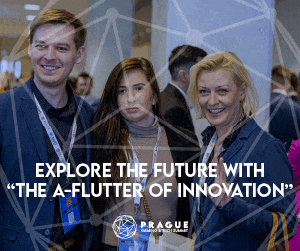Welcome to Blocks & Headlines: Today in Blockchain – February 17, 2025, your daily op-ed–style briefing that brings together the latest developments in blockchain technology and the cryptocurrency industry. Today, we explore a range of groundbreaking stories—from AI-powered smart contract risk analysis on LightChain to Blockchain.com’s strategic moves towards an IPO, from Polkadot’s pioneering blockchain course for policymakers to Colle AI’s innovative enhancements for NFT creation and blockchain connectivity, and finally to the transformative role of blockchain in enhancing food traceability and safety. In this comprehensive article, we will dive deep into each story, discuss its broader implications for the blockchain and crypto space, and reflect on the trends that are reshaping the landscape of Web3, DeFi, and NFTs.
In an era defined by decentralization and digital transformation, blockchain technology continues to redefine the way we transact, secure data, and interact with digital assets. The rapid pace of innovation is not only driving the evolution of cryptocurrency markets but is also paving the way for new applications that stretch from financial services to supply chain management, governance, and beyond. As governments, enterprises, and startups embrace blockchain, the need for secure, transparent, and efficient systems has never been more critical.
Today’s briefing is designed to provide you with detailed, opinion-driven insights into the latest blockchain developments. We will examine each news story in depth, exploring how these innovations are set to impact various sectors, influence regulatory and market trends, and ultimately contribute to the global digital economy. Whether you’re an investor, a blockchain enthusiast, or a policymaker, our analysis will equip you with a clearer understanding of the dynamic forces at work in the blockchain space.
A New Era of Smarter Contracts: AI-Powered Risk Analysis on LightChain
Source: Bitcoin.com
The first story on our agenda highlights a significant leap forward in blockchain technology—the integration of artificial intelligence for smart contract risk analysis on LightChain. As reported by Bitcoin.com, LightChain is pioneering the use of AI to provide enhanced risk assessments for smart contracts, enabling users to make smarter, data-driven decisions when interacting with blockchain protocols.
The Convergence of AI and Blockchain
Smart contracts are the backbone of decentralized finance (DeFi) and Web3 applications. However, as these self-executing agreements become more complex, so too do the risks associated with them. Vulnerabilities in smart contracts can lead to significant financial losses, as hackers exploit coding errors or security loopholes. Recognizing this critical challenge, LightChain has integrated advanced AI algorithms to analyze smart contract code in real time, identifying potential risks and flagging issues before they can be exploited.
This innovative approach leverages machine learning and pattern recognition to sift through vast amounts of code, assess historical data on smart contract failures, and predict vulnerabilities with a high degree of accuracy. By doing so, LightChain not only enhances the security of blockchain applications but also builds trust among developers and users who rely on smart contracts for critical transactions.
Implications for the Blockchain Ecosystem
From an industry perspective, the introduction of AI-powered risk analysis represents a transformative moment for blockchain security. As blockchain adoption expands across various sectors, the need for reliable, automated risk management tools becomes paramount. LightChain’s technology is an exemplary case of how the convergence of AI and blockchain can mitigate risks and streamline the process of contract auditing. This development could potentially set new industry standards, prompting other platforms to integrate similar AI-based security measures.
Moreover, the integration of such advanced technology underscores the importance of proactive security measures in an increasingly decentralized world. With the proliferation of DeFi platforms and NFT marketplaces, ensuring the integrity of smart contracts is crucial not only for individual projects but for the overall health of the blockchain ecosystem. The success of LightChain’s initiative may encourage further investment in AI-driven security solutions, ultimately leading to safer and more robust blockchain networks.
A Step Towards Smarter Decision Making
In our view, the move by LightChain to harness AI for smart contract risk analysis is both timely and necessary. In a field where even minor errors can have catastrophic consequences, ensuring robust risk management is essential. By integrating AI, LightChain is helping to democratize access to sophisticated security tools, enabling even smaller projects to benefit from enterprise-level risk assessments. This not only bolsters user confidence but also promotes a more secure and resilient blockchain infrastructure.
As the technology matures, we anticipate that AI-powered risk analysis will become a standard feature across blockchain platforms. The lessons learned from LightChain’s approach will likely inform future innovations in smart contract security, paving the way for more advanced tools that can predict and prevent vulnerabilities before they occur.
Blockchain.com Steps Toward an IPO with Strategic Executive Appointments
Source: CoinDesk
In a bold strategic move that signals its ambition and maturity in the cryptocurrency space, Blockchain.com is taking significant steps toward an initial public offering (IPO). According to CoinDesk, the company has recently announced key executive appointments that will lead the charge as it prepares to enter public markets. This development marks a major milestone for one of the leading names in the blockchain and cryptocurrency industry.
The Road to Public Markets
Blockchain.com has long been recognized as a pioneer in the cryptocurrency space, offering a suite of products that include wallets, exchanges, and market data services. The company’s decision to move toward an IPO is a testament to its growth and its commitment to scaling its operations on a global level. With the appointment of experienced executives, Blockchain.com is positioning itself to navigate the complexities of public markets while continuing to innovate in an increasingly competitive industry.
The strategic executive appointments are designed to strengthen the company’s leadership team and provide the necessary expertise to manage a publicly traded entity. These appointments signal that Blockchain.com is not only focused on short-term growth but is also laying the foundation for long-term success. By aligning its management team with the demands of a public company, Blockchain.com aims to build investor confidence and establish itself as a stable, mature player in the cryptocurrency ecosystem.
Broader Market Implications
The move toward an IPO is significant for several reasons. First, it reflects a broader trend of cryptocurrency companies seeking to transition from private startups to public market contenders. As regulatory frameworks become more defined and investor appetite for digital assets grows, public offerings are emerging as a viable path for companies looking to expand their footprint.
For Blockchain.com, the IPO represents an opportunity to access new capital, fuel innovation, and broaden its market presence. It also serves as a barometer for the health of the cryptocurrency industry as a whole. A successful IPO could pave the way for other blockchain companies to follow suit, further legitimizing the sector and attracting institutional investors.
From our perspective, Blockchain.com’s IPO journey is a critical indicator of the maturation of the crypto market. It demonstrates that established players are ready to embrace the scrutiny and opportunities of public markets, thereby setting the stage for a new era of transparency, accountability, and innovation in blockchain technology.
Navigating Regulatory and Market Challenges
Of course, moving toward an IPO is not without its challenges. Blockchain companies must navigate a complex regulatory landscape and address concerns related to security, scalability, and market volatility. However, with a strong leadership team in place, Blockchain.com appears well-equipped to tackle these issues head on. The company’s proactive approach to corporate governance and risk management will be key to its success in the public arena.
In conclusion, Blockchain.com’s strategic executive appointments and IPO preparations are a clear signal that the cryptocurrency industry is entering a new phase of institutional acceptance and growth. This development not only highlights the company’s ambition but also reflects the broader market trend toward greater transparency and stability in the blockchain space.
Polkadot Empowers Policymakers with a First-of-Its-Kind Blockchain Course
Source: CoinTelegraph
In an inspiring move that underscores the increasing importance of blockchain education in policymaking, Polkadot has launched the first blockchain course designed specifically for policymakers and UK Members of Parliament (MPs). CoinTelegraph reports that this initiative is part of a broader effort to demystify blockchain technology and foster informed decision-making at the highest levels of government.
Bridging the Knowledge Gap in Blockchain and Cryptocurrency
The rapidly evolving world of blockchain and cryptocurrency presents both immense opportunities and significant challenges for regulators. Recognizing this, Polkadot’s educational initiative aims to equip policymakers with the technical knowledge and strategic insights needed to navigate the complex regulatory landscape. By offering a specialized curriculum tailored to the needs of government officials, Polkadot is helping to bridge the knowledge gap that often exists between technologists and legislators.
The course covers a range of topics, including the fundamentals of blockchain technology, the role of decentralized finance (DeFi) in modern economies, and the potential impact of non-fungible tokens (NFTs) on digital art and intellectual property. It also delves into real-world applications of blockchain, from secure voting systems to transparent supply chain management, highlighting how these innovations can drive efficiency and accountability in public services.
The Significance of Educating Policymakers
In our opinion, this educational initiative is a critical step toward fostering a regulatory environment that is both supportive of innovation and protective of public interests. As blockchain technology continues to disrupt traditional industries and redefine the way we transact online, policymakers must be well-informed about its capabilities and limitations. By participating in such a course, UK MPs and other government officials will be better positioned to craft policies that encourage innovation while mitigating risks.
Furthermore, the course represents a proactive approach to regulatory engagement. Rather than waiting for disruptive events or crises to force legislative action, Polkadot is taking the initiative to educate those in power, thereby promoting a more balanced and forward-thinking approach to blockchain regulation. This initiative could serve as a model for other countries, sparking a global movement toward better-informed policymaking in the digital age.
Implications for the Blockchain Ecosystem
Polkadot’s foray into education has broader implications for the entire blockchain ecosystem. By empowering policymakers with the tools and knowledge they need to understand blockchain, the initiative helps to build a more supportive regulatory framework. A well-informed legislative body is more likely to enact policies that promote innovation, protect consumers, and foster a healthy digital economy. This, in turn, creates a more stable environment for blockchain projects and cryptocurrency markets to flourish.
In summary, Polkadot’s blockchain course for policymakers is an inspiring development that highlights the critical importance of education in driving the future of blockchain regulation. It is a forward-thinking initiative that will undoubtedly contribute to a more transparent, efficient, and innovative digital landscape.
Colle AI Rolls Out Enhanced Tools to Elevate NFT Creation and Blockchain Connectivity
Source: NewsfileCorp
In a move that promises to revolutionize the world of digital art and blockchain connectivity, Colle AI (COLLE) has unveiled a suite of enhanced AI tools designed to elevate NFT creation and streamline blockchain integration. As reported by NewsfileCorp, these new tools are set to empower creators and developers by simplifying the process of minting, managing, and connecting NFTs across different blockchain networks.
The Intersection of AI, NFTs, and Blockchain Connectivity
Non-fungible tokens (NFTs) have transformed the digital art landscape, offering artists and creators new ways to monetize their work while ensuring authenticity and provenance. However, the process of creating and managing NFTs can be complex and resource-intensive. Colle AI’s latest offering leverages advanced artificial intelligence to automate many of these tasks, reducing friction and opening up new possibilities for innovation in the NFT space.
By integrating AI into the NFT creation process, Colle AI is enabling more precise and efficient digital art management. The tools provide creators with intelligent insights into market trends, optimal minting strategies, and cross-chain connectivity options. This not only enhances the creative process but also helps artists reach broader audiences by facilitating smoother interactions between different blockchain networks.
Enhancing Creativity and Connectivity
The introduction of Colle AI’s enhanced tools is a significant development for both the creative and technical sides of the blockchain industry. For creators, the ability to leverage AI in the production of NFTs means more time can be dedicated to the art itself, rather than the technical challenges of blockchain integration. For developers, the streamlined connectivity between blockchains opens up new opportunities for interoperability, enabling decentralized applications (dApps) to function more cohesively across various ecosystems.
In our view, Colle AI’s initiative is a testament to the power of combining artificial intelligence with blockchain technology. As the NFT market continues to evolve, innovations like these will be essential in driving mass adoption and unlocking the full potential of digital assets. Moreover, by simplifying the technical complexities involved in NFT creation, Colle AI is democratizing access to blockchain technology, making it easier for emerging artists and developers to participate in the digital economy.
Broader Implications for the Digital Art and Blockchain Ecosystem
The impact of Colle AI’s enhanced tools extends beyond individual creators. By fostering better connectivity and interoperability between blockchains, these innovations are likely to accelerate the development of a more integrated digital ecosystem. This could lead to new forms of collaboration, more diverse NFT marketplaces, and ultimately, a more vibrant and dynamic Web3 environment.
Overall, Colle AI’s rollout of enhanced AI tools marks a pivotal moment in the evolution of NFTs and blockchain connectivity. It underscores the transformative potential of AI in simplifying complex processes, driving innovation, and broadening access to the rapidly expanding world of digital assets.
Blockchain in Food: Enhancing Traceability and Safety
Source: MEER
In a fascinating demonstration of blockchain’s versatility, the technology is now being applied to enhance traceability and safety in the food industry. A report by MEER highlights how blockchain is being used to track the journey of food products from farm to table, ensuring transparency, quality, and safety throughout the supply chain.
Transforming Food Safety with Blockchain
Food traceability has long been a challenge for the agricultural and food processing sectors. Issues such as contamination, fraud, and mislabeling have significant implications for public health and consumer trust. Blockchain technology, with its immutable and transparent ledger, offers an innovative solution to these challenges. By recording every transaction and movement of food products along the supply chain, blockchain enables real-time tracking and verification, ensuring that products meet stringent safety and quality standards.
The MEER report details how blockchain is being integrated into food supply chains to provide end-to-end traceability. From the initial planting of crops to their processing, packaging, and distribution, every step is recorded on a blockchain network. This not only enhances accountability but also provides consumers with verifiable data about the origin and handling of their food products.
Implications for Consumers and Producers
For consumers, the use of blockchain in food traceability means greater transparency and confidence in the products they purchase. It allows for quick identification of sources in the event of a contamination outbreak, enabling swift corrective action and minimizing public health risks. For producers and distributors, blockchain offers an efficient tool for verifying compliance with safety standards and streamlining supply chain management.
In our opinion, the application of blockchain in the food industry is a prime example of how decentralized technology can deliver tangible benefits in everyday life. By ensuring that every step of the supply chain is documented and immutable, blockchain not only enhances food safety but also builds consumer trust in an increasingly complex global market.
A Model for Broader Adoption
The success of blockchain initiatives in the food sector could serve as a model for broader adoption across other industries. As consumers demand greater transparency and accountability, the principles of blockchain traceability could be applied to sectors such as pharmaceuticals, luxury goods, and even voting systems. The MEER report serves as a compelling case study of how blockchain’s core attributes—transparency, immutability, and decentralization—can address real-world challenges and drive innovation across diverse markets.
Synthesis: Key Takeaways from Today’s Blockchain Landscape
As we reflect on today’s stories, several key themes emerge that underscore the dynamic evolution of blockchain technology and the cryptocurrency industry:
1. AI and Automation Are Driving Smarter Blockchain Decisions
From LightChain’s AI-powered smart contract risk analysis to Colle AI’s innovative tools for NFT creation, the integration of artificial intelligence is proving to be a game changer in the blockchain space. AI is not only enhancing security and efficiency but also democratizing access to complex technologies, enabling more informed decision-making and fostering innovation across the ecosystem.
2. Strategic Corporate Moves Signal Maturation in the Crypto Sector
Blockchain.com’s strategic executive appointments and its push toward an IPO represent a significant milestone for the cryptocurrency industry. These developments signal a maturing market that is ready to embrace public scrutiny and institutional investment. As traditional financial institutions and regulators take a closer look at blockchain companies, we can expect increased transparency, accountability, and growth in the sector.
3. Educating Policymakers Is Essential for a Future-Proof Regulatory Environment
Polkadot’s groundbreaking initiative to educate UK policymakers on blockchain fundamentals reflects the critical importance of bridging the gap between technology and regulation. By equipping government officials with the knowledge needed to understand blockchain, we pave the way for more informed, balanced policies that support innovation while protecting public interests.
4. Interoperability and Connectivity Are Key to Unlocking Blockchain’s Full Potential
The rollout of enhanced AI tools by Colle AI and the growing emphasis on blockchain connectivity highlight the need for interoperability between different blockchain networks. As digital assets and decentralized applications become more prevalent, seamless integration will be crucial for creating a cohesive and efficient Web3 ecosystem.
5. Blockchain’s Versatility Extends Beyond Finance
The application of blockchain in the food industry is a compelling reminder that the technology’s impact reaches far beyond cryptocurrencies and decentralized finance. Whether it’s ensuring food safety, tracking supply chains, or verifying product authenticity, blockchain’s ability to provide transparency and accountability is transforming multiple sectors.
Conclusion: Today’s Major Takeaways and Future Perspectives
In today’s fast-paced blockchain landscape, the news stories we’ve explored offer a window into a future defined by innovation, strategic transformation, and increased integration across industries. The convergence of AI with blockchain is driving smarter, more secure, and efficient systems—from risk analysis in smart contracts to the automation of NFT creation. Strategic corporate moves, such as Blockchain.com’s preparation for an IPO, underscore the maturing nature of the cryptocurrency market and signal a new era of institutional investment and regulatory clarity.
Educational initiatives, like Polkadot’s blockchain course for policymakers, are critical for shaping a balanced regulatory environment that supports innovation while ensuring public safety and transparency. Meanwhile, the application of blockchain in diverse fields, such as food traceability, illustrates the technology’s far-reaching potential to revolutionize traditional industries by instilling trust, enhancing accountability, and delivering real-world benefits.
As blockchain continues to evolve, one thing remains clear: the technology is not only redefining finance and digital assets but is also laying the groundwork for a more connected, transparent, and efficient global economy. The innovations and strategic moves highlighted today are just the beginning. Looking ahead, we can expect further breakthroughs in blockchain interoperability, AI integration, and cross-industry applications that will drive the next wave of technological transformation.
For blockchain enthusiasts, investors, developers, and policymakers alike, staying informed about these trends is essential. The rapidly changing dynamics of blockchain and cryptocurrency require a proactive approach to harness the full potential of decentralized technologies. By embracing innovation, fostering strategic partnerships, and prioritizing education and security, we can collectively build a more resilient and forward-thinking digital future.
In closing, today’s briefing underscores the transformative power of blockchain technology. Whether it’s through advanced AI-driven tools, strategic corporate initiatives, or groundbreaking educational programs, the blockchain space is evolving at an unprecedented pace. As we move forward, the lessons of today will serve as a beacon for tomorrow’s innovations, guiding us toward a future where blockchain not only underpins digital finance but also enriches every facet of our global society.
Thank you for joining us for this in-depth exploration of today’s blockchain developments. Stay tuned for tomorrow’s edition of Blocks & Headlines: Today in Blockchain, where we will continue to bring you timely insights, comprehensive analyses, and thought-provoking commentary from the ever-evolving world of blockchain and cryptocurrency.














Got a Questions?
Find us on Socials or Contact us and we’ll get back to you as soon as possible.